The Matthews and Willard Mfg. Co. of Waterbury, Connecticut, was organized on April 8, 1890, succeeding the corporation of the same name which went into receivership in 1888. After the company went into the hands of the receiver, it was purchased and reorganized by H.F. Davis of Watertown, and Charles Miller. The original business dates back to 1814 when Henry A. Matthews began the manufacture of saddlery, harness and carriage trimmings. The business went through a number of changes until 1882 when it became the Matthews & Willard Manufacturing Company, having previously been known as the Matthews & Stanley Manufacturing Company. In 1880, the scope of the business was widened by the production of stove ornaments in brass and bronze, brass furniture, statuettes, and various specialties.1 In 1904, The Scovill Manufacturing Company purchased the company and it was absorbed into their manufacturing concerns.2
M&W banquet lamps and piano lamps are depicted in the Simmons Hardware Company Lamp Catalog No. 468 from 1905-06, see left margin above. One tubular lantern patent was assigned to them, so it is assumed that they manufactured lanterns as well. It would appear as though Matthews & Willard dated many of their items much the way automobile manufacturers designate model years. You may find lamp flame spreaders marked "M&W 95" or "M&W 97," indicating perhaps improvements in performance or design over the previous model. The same holds true for their bicycle lamp advertisements which may emphasize '97, or '98, which seem to be banner years for the sales and marketing of bicycle lights. The Matthews and Willard Mfg. Co. was assigned at least eighteen lighting-related patents between July 12, 1892 and June 16, 1903. See the patent table below for details. John C. Miller was a major contributor having been involved in all but one of the patents listed below.
Overall, John C. Miller has at least twenty-nine patents to his credit and a clear pattern of employment or loyalty develops. From 1889-1891, he had eight patents, all assigned to The Meriden Bronze Company, Meriden, Connecticut. From 1892 through the beginning of 1898, all patents were assigned to The Matthews & Willard Mfg. Co., as noted above. Miller's patent dated November 1, 1898 and his two 1899 patents are all assigned to The Miller Manufacturing Company of Torrington, Connecticut. Miller lists his residence as Torrington as well. More about The Miller Manufacturing Company...
John C. Miller apparently started organizing his company late in 1897 or early in 1898. On January 28, 1898, an article in The Torrington Register notes that the new business "will endeavor to purchase some machinery in Ansonia" and that John C. Miller of Waterbury is the secretary-treasurer, that A.F. Migeon, J.C. Miller and John Alvord will sit on the board of directors. The article states that of the 500 shares of company stock, about half "...held by Mr. Miller and a Mr. Max D. Cohn, Jr., of Boston."5
The Miller Manufacturing Company was incorporated as a Joint Stock Corporation on February 10, 1898 with a capital stock of $50,000. The company officers were: John F. Alvord, president; James A. Doughty, vice president; and John C. Miller, treasurer. The principle articles of manufacture of the company were art metal goods. This included lamps, tables, bronzes, bicycle trimmings, stove trimmings, mirror frames, and specialties in German-silver, brass and steel. The Annual Statement of The Miller Manufacturing Company dated February 15, 1899 lists the president as Achille F. Migeon. Of the five hundred outstanding shares, Miller owned one hundred shares; Migeon held twenty-five; John F. Alvord, fifteen; and James A. Doughty, five. There is no mention of Mr. Cohn noted above, and all five hundred shares are accounted for. Interestingly, The Coe Brass Manufacturing Company, which had a rolling mill in Torrington, held seventy-five shares. In 1896, James A. Doughty is listed as the secretary of Coe Brass and president of The Torrington Manufacturing Company. Similarly, A.F. Migeon is listed as president of The Union Hardware Company, president of The Excelsior Needle Company (J.F. Alvord, secretary), president of The New Process Nail Company, and president of The Eagle Bicycle Company - busy men indeed!6 The Miller Manufacturing Company was listed in the Torrington city directories from 1898 through 1901 as: "Miller Mfg. Co., mfrs. Art metal goods, Church c. John." A Treasurer's Report on company letterhead, signed by Miller on March 2, 1901, lists the company's assets and liabilities at $76,840.63. This includes a line item for "patents" which are valued at $551.10, but there are not any details. In August, 1901, the assets of The Miller Manufacturing Company were auctioned to the highest bidder. These assets, including machinery and stock, were estimated to be worth $30,000. The hammer price at the auction was a mere $4,000; the lucky bidder was a certain Mr. G.E. Cole. From the information in the obituary, one would conclude that this is when Miller moved to New York and then onto Pittsburgh.
To view any of the above patents, enter the number in the box below and select Query USPTO Database. This will take you to the specific patent images on the U.S. Patent & Trademark Office Database. Learn more about the USPTO here.
| |||||||||||||||||||||||||||||||||||||||||||||||||||||
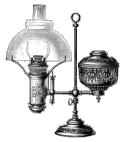
| Reference Desk | Lamp Information | Other Resources | On-Line Shopping |

Purveyors of Antique Lighting and Accessories
435 Main Street
 Hurleyville, New York 12747
Hurleyville, New York 12747
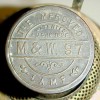 M&W Flame Spreader
M&W Flame SpreaderPat'd. August 18, 1896 --------------------- Enlarge image [+] |
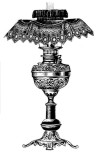 Simmons Hardware
Simmons HardwareLamp Catalog No. 468, 1905-06 --------------------- Enlarge image [+] |
a brief historical profile of

The Matthews & Willard Manufacturing Company
^ Top of Page
Privacy Policy | Terms and Conditions of Use | Announcements
Copyright © 2001-2011 ~ Daniel Edminster | The Lampworks ~ All Rights Reserved
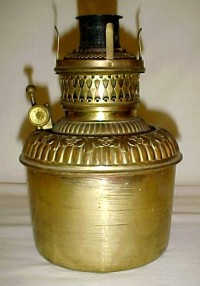
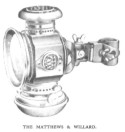
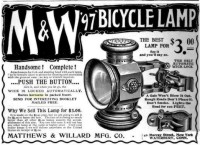
 Search Matthew & Willard's Patents
Search Matthew & Willard's Patents